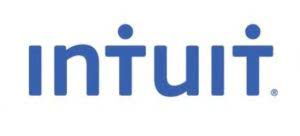
On the other hand Service Revenues is an income statement account and its balance will be closed when the current year is over. Revenues and expenses always start the next accounting year with $0. The $1,500 balance in the asset account Prepaid Insurance is the preliminary balance. The correct amount is the amount that has been paid t account ending balance by the company for insurance coverage that will expire after the balance sheet date.
- The $1,500 balance in the asset account Prepaid Insurance is the preliminary balance.
- This is posted to the Common Stock T-account on the credit side (right side).
- For example, interest earned by a manufacturer on its investments is a nonoperating revenue.
- The income statement is also referred to as the profit and loss statement, P&L, statement of income, and the statement of operations.
- Amounts are routinely entered into this account when the company’s payroll records are processed.
- A word used by accountants to communicate that an expense has occurred and needs to be recognized on the income statement even though no payment was made.
- A review of the details confirms that this account’s balance of $1,200 is accurate as far as the payrolls that have been processed.
AccountingTools
The easiest way to show the process of balancing off accounts is by looking at an example. The balance at the beginning of a period is called the opening balance. The last element of the T-account that we need to cover is fixed assets its balance. Be sure to test yourself on this lesson and how to balance a T-account by trying the Balancing a T-Account Practice Question further below.

📆 Date: May 3-4, 2025🕛 Time: 8:30-11:30 AM EST📍 Venue: OnlineInstructor: Dheeraj Vaidya, CFA, FRM
For the company’s December income statement to accurately report the company’s profitability, it must include all of the company’s December expenses—not just the expenses that were paid. Similarly, for the company’s balance sheet on December 31 to be accurate, it must report a liability for the interest owed as of the balance sheet date. An adjusting entry is needed so that December’s interest expense is included on December’s income statement and the interest due as of December 31 is included on the December 31 balance sheet.
- In contrast to the permanent account, the balance on a temporary account does not continue into the next accounting period.
- This T format graphically depicts the debits on the left side of the T and the credits on the right side.
- One is entered at the beginning of the period (like the month) and the other is entered and the end of the period.
- Also referred to as a “p.o.” A multi-copy form prepared by the company that is ordering goods.
- Let’s assume the review indicates that the preliminary balance in Accounts Receivable of $4,600 is accurate as far as the amounts that have been billed and not yet paid.
Adjusting Entries Outline
Using T Accounts, tracking multiple journal entries within a certain period of time becomes much easier. Every journal entry is posted to its respective T Account, on the correct side, by the correct amount. Once again, debits to revenue/gain decrease the account while credits increase the account.

A company selling merchandise on credit will record these sales in a Sales account and in an Accounts Receivable account. Once all journal entries have been posted to T-accounts, we can check to make sure the accounting equation remains balanced. A summary showing the T-accounts for Printing Plus is presented in Figure 3.10. We now return to our company example of Printing Plus, Lynn Sanders’ printing service company. We will analyze and record each of the transactions for her business and discuss how this impacts the financial statements. Some of the listed transactions have been ones Record Keeping for Small Business we have seen throughout this chapter.

